Heart Month: Did you know?

February is Heart Month, a time to raise awareness about the importance of cardiovascular health. Did you know… Cardiac arrest and heart attack are two distinct medical emergencies that involve the heart, but they differ in their underlying causes, symptoms, and outcomes. Understanding these differences is crucial for prompt and appropriate medical response.
HEART ATTACK
A heart attack, also known as a myocardial infarction, occurs when blood flow to a part of the heart muscle is blocked. This blockage is often the result of a blood clot forming in a coronary artery, which supplies oxygen and nutrients to the heart. The clot can develop in an area where there is already a buildup of fatty deposits (plaque) on the arterial walls. The lack of blood flow during a heart attack can lead to damage or death of the heart muscle cells. Common symptoms of a heart attack include chest pain or discomfort, shortness of breath, nausea, and pain or discomfort in the arms, back, neck, jaw, or stomach.
CARDIAC ARREST
On the other hand, cardiac arrest is a sudden and abrupt loss of heart function. It occurs when the heart’s electrical system malfunctions, causing an irregular heartbeat (arrhythmia). This irregular heartbeat can be so chaotic that the heart stops pumping blood effectively. Unlike a heart attack, cardiac arrest often occurs suddenly and without warning. The affected individual may lose consciousness, stop breathing, and have no detectable pulse. Immediate intervention is critical in the form of cardiopulmonary resuscitation (CPR) and, ideally, the use of an automated external defibrillator (AED) to restore a normal heart rhythm.
SUMMARY
The primary distinction between a heart attack and cardiac arrest lies in their causes and mechanisms. A heart attack is typically a result of a blocked coronary artery, leading to damage to the heart muscle, while cardiac arrest results from a sudden malfunction in the heart’s electrical system, causing the heart to stop pumping blood.
The causes of cardiac arrest include coronary heart disease, a heart attack, congenital heart disease, electrocution, drowning, choking, respiratory distress and recreational drug use, according to the Heart and Stroke Foundation. Both conditions are serious and require urgent medical attention, but the immediate response and interventions differ. Recognizing the symptoms and understanding the disparities between these two life-threatening events are vital for individuals and healthcare professionals alike to ensure appropriate and timely care. Regular medical check-ups, a heart-healthy lifestyle, and awareness of risk factors contribute to preventing both cardiac arrest and heart attacks.
Did you know…..?
- nearly half of cardiac arrests happen to people under the age of 65.
- Eighty per cent of cardiac arrests or more happen in your own home, and it’s not going to be a stranger!
- every nine minutes one Canadian has an out-of-hospital cardiac arrest
- Every Second COUNTS!!
Immediate CPR keeps the blood pumping to keep the brain and other vital organs alive and an AED will shock the heart to help it restart. Survival drops significantly every minute without these life-saving measures.

Kathryn Davies
President / Owner
Life’s Emergency Training WSIB Certified Training
